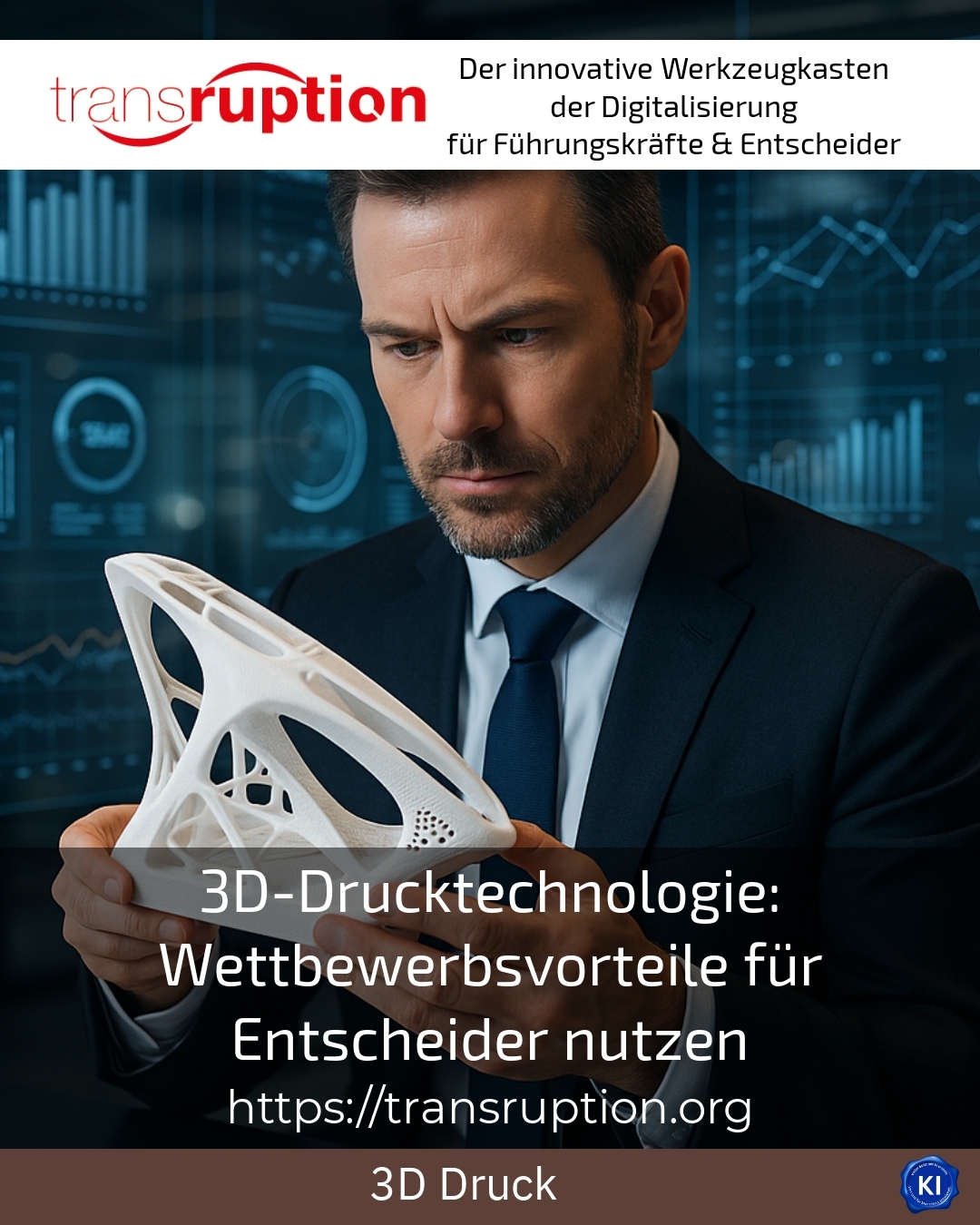3D printing technology is becoming increasingly important for companies that want to gain a competitive edge. It enables more flexible, faster and often more cost-efficient production of complex components and customised products. Decision-makers should understand how they can strategically utilise this technology to accelerate innovation processes and open up new business areas.
Why 3D printing technology is becoming increasingly relevant for decision-makers
3D printing technology offers decision-makers the opportunity to significantly accelerate product development and reduce costs at the same time. Companies such as BMW and Ducati use 3D printing specifically for the fast and economical production of prototypes. This supports iterative development cycles and promotes product design that is closely orientated to customer requirements. The flexibility to produce complex geometries without tools makes the technology particularly attractive for small-volume and customised production[1][3].
3D printing is also a strategic tool for companies with greater ambitions. Airbus, for example, is integrating 3D printing into the entire value chain, from design to after-sales service, in order to shorten time-to-market and produce complex components cost-effectively[1]. The focus is also on companies in the defence industry such as MBDA, which use additive manufacturing to produce sophisticated components and thus increase their innovative capacity.
Diverse application examples from different industries
The fields of application for 3D printing technology are wide-ranging and support various industries:
- In the automotive industry, companies such as Radford Motors enable the customisation of luxury vehicles, which would otherwise hardly be economically feasible[2].
- In mechanical engineering, the Alpha Precision Group reduces costs and lead times for metal parts by up to 90 per cent thanks to 3D printing[2].
- Medical applications include customised implants, prostheses and surgical models that facilitate clinical processes and improve patient care[4][6].
Small and medium-sized companies also benefit enormously. Thanks to the 3D printing market, they can react flexibly to changes in demand without having to invest heavily in moulds. This means that small batches and customised products can be produced economically and significantly shorten market-relevant development times[3][5].
Practical examples of successful utilisation
BEST PRACTICE at the customer (name concealed due to NDA contract): A medium-sized mechanical engineering company was able to produce high-quality prototypes in weeks instead of months by integrating 3D printing technology into the development process. This not only accelerated the development cycles, but also increased the vertical range of manufacture and led to a faster market launch of specialised machines.
BEST PRACTICE at the customer (name hidden due to NDA contract): A company from the aviation industry uses 3D printing to produce lightweight components with complex structures. This has resulted in weight reductions that have a positive impact on fuel consumption and the carbon footprint - a decisive competitive advantage in the industry.
BEST PRACTICE at the customer (name hidden due to NDA contract): An innovative sports shoe manufacturer is revolutionising its design by 3D printing custom-fit soles. Customers appreciate the customisation and comfort, while the company expands its product variety cost-effectively and flexibly thanks to digital manufacturing.
How decision-makers secure competitive advantages with 3D printing technology
It is important for managers to see 3D printing technology not as a one-off solution, but as an integral part of the corporate strategy. This includes:
- Early involvement of all relevant departments such as development, production and purchasing in order to realistically assess opportunities and restrictions[1].
- Targeted planning of the scope of use: From rapid prototype construction to series production and spare parts management, benefits can be realised for various areas[11].
- Establishing or cooperating with specialised 3D printing service providers, especially if investing in your own equipment is not economical[5].
- Promoting a culture of innovation and freedom of design in order to create new product features and increase customer benefits through complex geometries[11].
The use of 3D printing technology often also supports sustainability goals. Material consumption can be reduced and logistics simplified through on-demand production.
My analysis
3D printing technology offers companies a wide range of opportunities to increase flexibility, efficiency and innovative strength. In particular, it enables product development to be accelerated, individual customer requirements to be better realised and new business areas to be opened up. Decision-makers who utilise this technology strategically secure long-term competitive advantages for their company. It is important to understand 3D printing as an integral part of production and development and to link it with suitable partners and a clear strategy.
Further links from the text above:
Competitive advantage thanks to 3D printing
3D printing for small businesses: A competitive advantage
3D printing applications - overview & examples
3D printing service providers provide a competitive advantage
3D printing for small businesses
For more information and if you have any questions, please contact Contact us or read more blog posts on the topic TRANSRUPTION here.
















